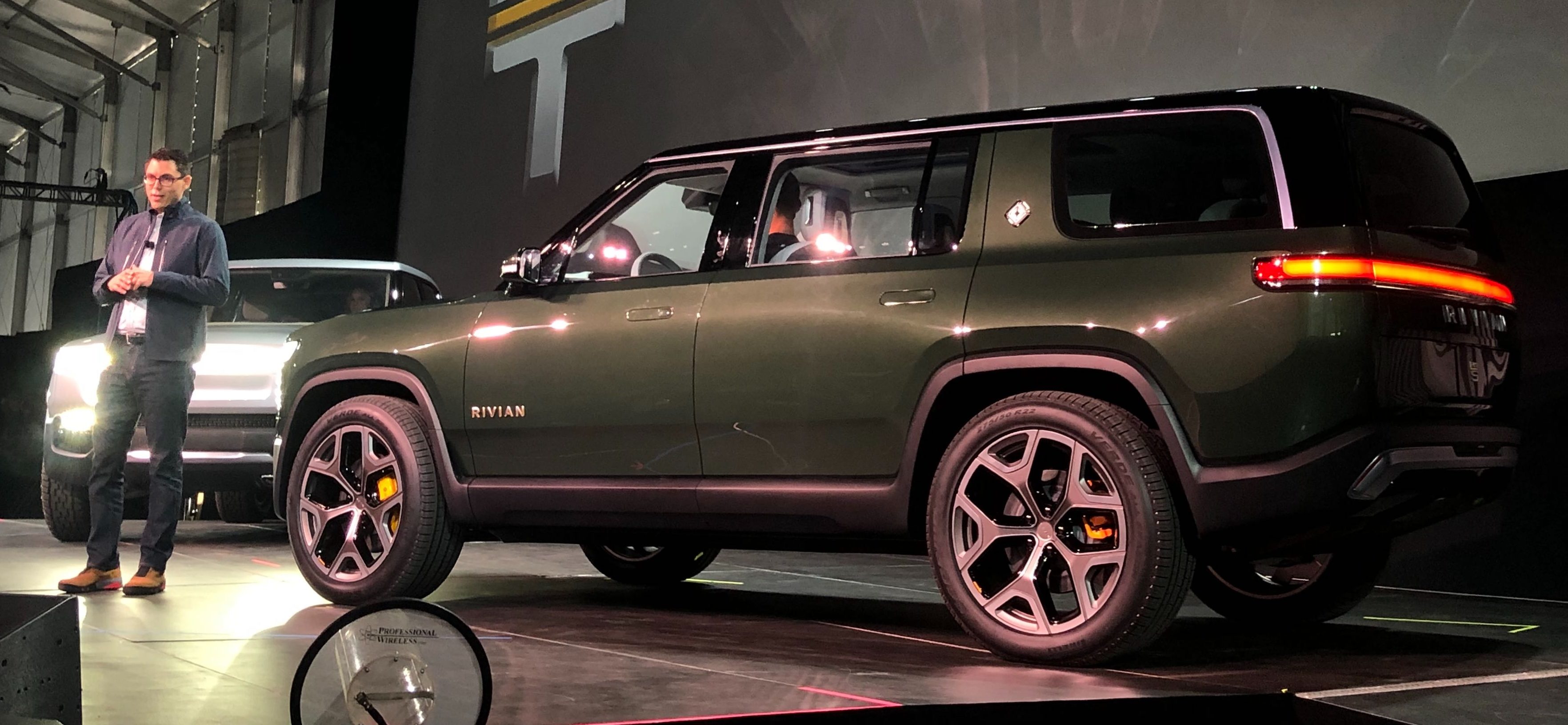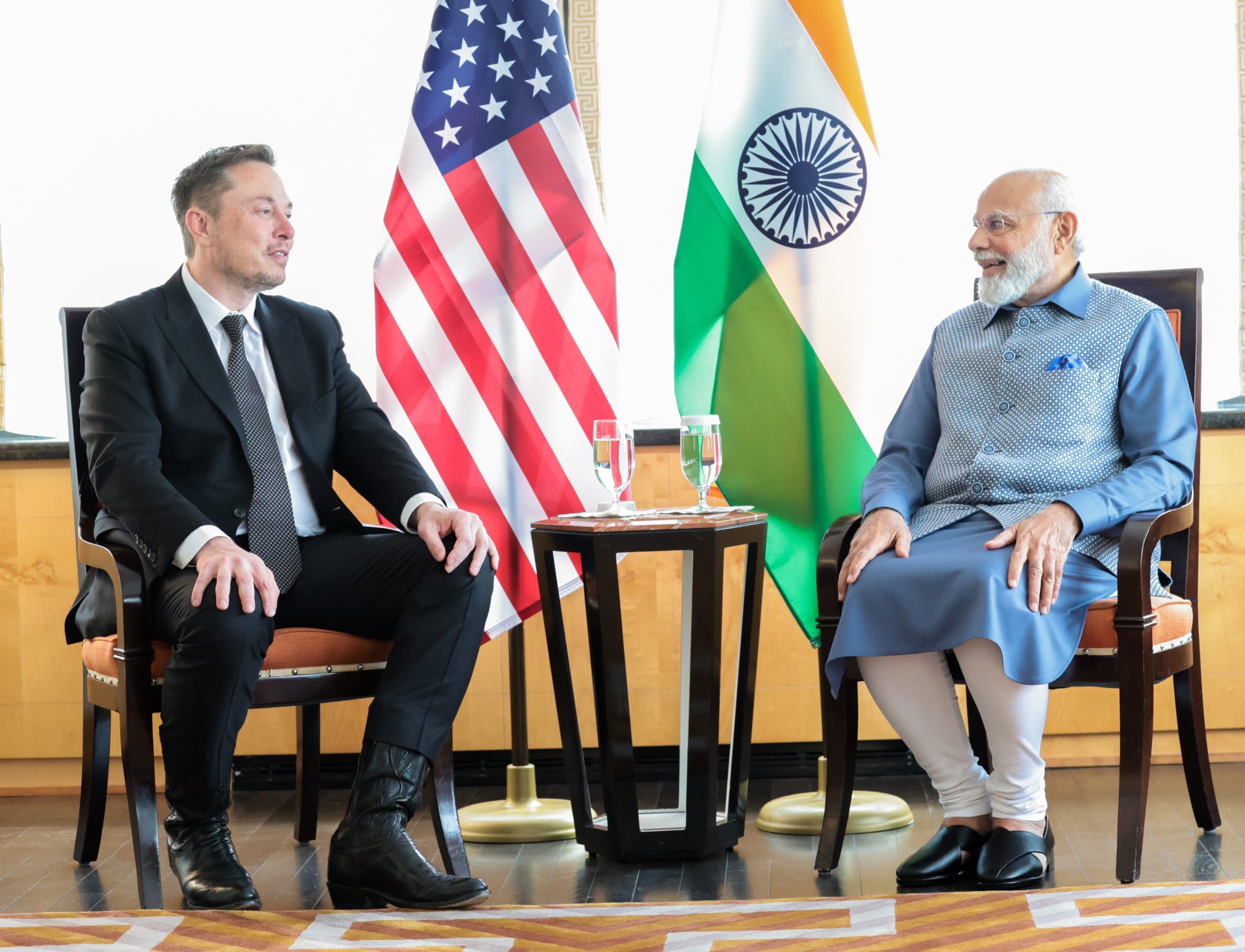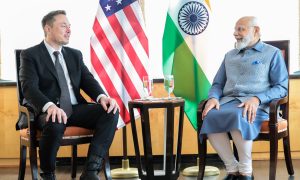

News
Tesla gets nod from Rivian CEO for combating ‘untruths’ about electric vehicles
The long, arduous road that Tesla traveled over the past years was recently acknowledged by RJ Scaringe, the 35-year-old CEO of electric vehicle maker Rivian. During a fireside chat at the Automotive News World Congress, Scaringe noted that his 10-year-old company aims to do to pickup trucks and off-road-capable SUVs what Tesla did to the performance and premium automotive segments. That is, he wants Rivian to disprove any untruths that are currently prevalent in the truck and SUV industry.
“I think any great brand … to build a brand that customers are going to be excited about and that customers are going to want to be part of, it has to fundamentally reset expectations. It has to disprove untruths. Tesla took the untruth that electric cars were boring and slow — that they were glorified golf carts — and they disproved that. They showed people that an electric car can be exciting and fun. What we need to disprove is that an electric vehicle can’t get dirty, and that an electric vehicle can’t be rugged, and an electric vehicle can’t go off-road and take your family places, and that an off-road vehicle can’t be good on-road,” he said.
Rivian’s first two vehicles, the R1T pickup truck and the R1S SUV, seem perfectly capable of playing the part. Rivian impressed the EV community and the auto industry when it emerged after 10 years of operating on stealth mode. Both vehicles are well-rounded and refined, created through years of work by a team that included alumni from McLaren (yes, that McLaren). Both have four electric motors that provide immense power and torque, both offer range of over 400 miles per charge, and both are built with intelligent driver-assist features that can transition into full self-driving in the future. During the R1T’s unveiling last November at the historic Griffith Observatory in Los Angeles, Rivian’s intentions of tapping into the premium EV market were evident.

During his recent fireside chat, Scaringe mentioned that the market Rivian is going for are people who own adventure vehicles and luxury vehicles. In a later statement, Scaringe expressed a point related by Elon Musk during the days of the original Roadster, when he noted that the small, two-door high-performance sports car should perform on the same level as the best fossil fuel-powered cars around. For Scaringe, this same point stands true for the R1T and the R1S.
“We want to get the guy who already has a Range Rover sitting next to a Tesla [in the garage], or the [Jeep] Wrangler sitting next to the [BMW] i3, and grab them with something that was just completely different than what they thought was possible. It will be the best-driving truck or SUV in the world. It must be, because if it’s not, why would somebody pick us over a Ford or over a BMW?” he said.
For now, though, Scaringe noted that Rivian is determined to learn from the experiences of companies like Tesla, while integrating concepts from established automakers such as GM and Toyota. With the successful unveiling of its first vehicles, after all, Rivian is about to tackle one of the hardest parts of being an automaker — actually building cars.
“We do recognize the complexity of assembling and putting vehicles together, of managing a very complex supply chain and logistics network, and we’re very [cognizant] of the nuts and bolts, and of the need to follow a proper process to ensure that, when we launch the vehicle, it can be launched with as few problems, errors, and challenges as possible,” Scaringe said.

When Elon Musk wrote his Master Plan Part Deux, he openly admitted that it is very difficult to become successful in the United States’ auto market. Considering the number of automakers that have gone under, Musk lightly noted that starting a car company is downright idiotic, and starting an electric car company is “idiocy squared.” As foolhardy as the venture might have been, though, Tesla has thrived, driven by an ever-increasing demand for its premium electric cars and energy storage products. The Model 3, the company’s most affordable vehicle to date, has been making a dent in the US’ auto market, becoming the overall best-selling luxury car in the country last year.
It has not been easy for the Silicon Valley-bred carmaker. The Model 3 ramp, for one, is described by Elon Musk as one of the most difficult periods of his career. Musk bet Tesla’s future in the electric sedan, and it took longer than expected to reach the company’s self-imposed production targets. Nevertheless, since hitting its goal of producing 5,000 Model 3 per week at the end of Q2 2018, Tesla has steadily improved its footing with the electric car’s production. In Q3 2018, Tesla even posted a profit. The fourth quarter of 2018 might be just as successful.
If Rivian’s strategy so far is any indication, though, the company stands a good chance of avoiding some of the challenges faced by Tesla during the ramps of the original Roadster, the Model S, X, and 3. Rivian, for one, has already secured a facility in Normal, Ill. The company is also working closely on the development of its vehicles’ battery packs. Apart from this, Rivian is also consulting the veterans of the auto industry. In his recent appearance at Autoline After Hours, for one, auto teardown specialist Sandy Munro, who conducted a thorough analysis of the Tesla Model 3, mentioned that Rivian is one of his firm’s clients.
News
Tesla launches in India with Model Y, showing pricing will be biggest challenge
Tesla finally got its Model Y launched in India, but it will surely come at a price for consumers.

Tesla has officially launched in India following years of delays, as it brought its Model Y to the market for the first time on Tuesday.
However, the launch showed that pricing is going to be its biggest challenge. The all-electric Model Y is priced significantly higher than in other major markets in which Tesla operates.
On Tuesday, Tesla’s Model Y went up for sale for 59,89,000 rupees for the Rear-Wheel Drive configuration, while the Long Range Rear-Wheel Drive was priced at 67,89,000.
This equates to $69,686 for the RWD and $78,994 for the Long Range RWD, a substantial markup compared to what these cars sell for in the United States.
🚨 Here’s the difference in price for the Tesla Model Y in the U.S. compared to India.
🚨 59,89,000 is $69,686
🚨 67,89,000 is $78,994 pic.twitter.com/7EUzyWLcED— TESLARATI (@Teslarati) July 15, 2025
Deliveries are currently scheduled for the third quarter, and it will be interesting to see how many units they can sell in the market at this price point.
The price includes tariffs and additional fees that are applied by the Indian government, which has aimed to work with foreign automakers to come to terms on lower duties that increase vehicle cost.
Tesla Model Y seen testing under wraps in India ahead of launch
There is a chance that these duties will be removed, which would create a more stable and affordable pricing model for Tesla in the future. President Trump and Indian Prime Minister Narendra Modi continue to iron out those details.
Maharashtra Chief Minister Devendra Fadnavis said to reporters outside the company’s new outlet in the region (via Reuters):
“In the future, we wish to see R&D and manufacturing done in India, and I am sure at an appropriate stage, Tesla will think about it.”
It appears to be eerily similar to the same “game of chicken” Tesla played with Indian government officials for the past few years. Tesla has always wanted to enter India, but was unable to do so due to these import duties.
India wanted Tesla to commit to building a Gigafactory in the country, but Tesla wanted to test demand first.
It seems this could be that demand test, and the duties are going to have a significant impact on what demand will actually be.
Elon Musk
Tesla ups Robotaxi fare price to another comical figure with service area expansion
Tesla upped its fare price for a Robotaxi ride from $4.20 to, you guessed it, $6.90.

Tesla has upped its fare price for the Robotaxi platform in Austin for the first time since its launch on June 22. The increase came on the same day that Tesla expanded its Service Area for the Robotaxi ride-hailing service, offering rides to a broader portion of the city.
The price is up from $4.20, a figure that many Tesla fans will find amusing, considering CEO Elon Musk has used that number, as well as ’69,’ as a light-hearted attempt at comedy over the past several years.
Musk confirmed yesterday that Tesla would up the price per ride from that $4.20 point to $6.90. Are we really surprised that is what the company decided on, as the expansion of the Service Area also took effect on Monday?
But the price is now a princely $6.90, as foretold in the prophecy 😂
— Elon Musk (@elonmusk) July 14, 2025
The Service Area expansion was also somewhat of a joke too, especially considering the shape of the new region where the driverless service can travel.
I wrote yesterday about how it might be funny, but in reality, it is more of a message to competitors that Tesla can expand in Austin wherever it wants at any time.
Tesla’s Robotaxi expansion wasn’t a joke, it was a warning to competitors
It was only a matter of time before the Robotaxi platform would subject riders to a higher, flat fee for a ride. This is primarily due to two reasons: the size of the access program is increasing, and, more importantly, the service area is expanding in size.
Tesla has already surpassed Waymo in Austin in terms of its service area, which is roughly five square miles larger. Waymo launched driverless rides to the public back in March, while Tesla’s just became available to a small group in June. Tesla has already expanded it, allowing new members to hail a ride from a driverless Model Y nearly every day.
The Robotaxi app is also becoming more robust as Tesla is adding new features with updates. It has already been updated on two occasions, with the most recent improvements being rolled out yesterday.
Tesla updates Robotaxi app with several big changes, including wider service area
News
Tesla Model Y and Model 3 dominate U.S. EV sales despite headwinds
Tesla’s two mainstream vehicles accounted for more than 40% of all EVs sold in the United States in Q2 2025.

Tesla’s Model Y and Model 3 remained the top-selling electric vehicles in the U.S. during Q2 2025, even as the broader EV market dipped 6.3% year-over-year.
The Model Y logged 86,120 units sold, followed by the Model 3 at 48,803. This means that Tesla’s two mainstream vehicles accounted for 43% of all EVs sold in the United States during the second quarter, as per data from Cox Automotive.
Tesla leads amid tax credit uncertainty and a tough first half
Tesla’s performance in Q2 is notable given a series of hurdles earlier in the year. The company temporarily paused Model Y deliveries in Q1 as it transitioned to the production of the new Model Y, and its retail presence was hit by protests and vandalism tied to political backlash against CEO Elon Musk. The fallout carried into Q2, yet Tesla’s two mass-market vehicles still outsold the next eight EVs combined.
Q2 marked just the third-ever YoY decline in quarterly EV sales, totaling 310,839 units. Electric vehicle sales, however, were still up 4.9% from Q1 and reached a record 607,089 units in the first half of 2025. Analysts also expect a surge in Q3 as buyers rush to qualify for federal EV tax credits before they expire on October 1, Cox Automotive noted in a post.
Legacy rivals gain ground, but Tesla holds its commanding lead
General Motors more than doubled its EV volume in the first half of 2025, selling over 78,000 units and boosting its EV market share to 12.9%. Chevrolet became the second-best-selling EV brand, pushing GM past Ford and Hyundai. Tesla, however, still retained a commanding 44.7% electric vehicle market share despite a 12% drop in in Q2 revenue, following a decline of almost 9% in Q1.
Incentives reached record highs in Q2, averaging 14.8% of transaction prices, roughly $8,500 per vehicle. As government support winds down, the used EV market is also gaining momentum, with over 100,000 used EVs sold in Q2.
Q2 2025 Kelley Blue Book EV Sales Report by Simon Alvarez on Scribd
-

 News3 days ago
News3 days agoTesla debuts hands-free Grok AI with update 2025.26: What you need to know
-

 Elon Musk1 week ago
Elon Musk1 week agoElon Musk confirms Grok 4 launch on July 9 with livestream event
-

 Elon Musk6 days ago
Elon Musk6 days agoxAI launches Grok 4 with new $300/month SuperGrok Heavy subscription
-

 News2 weeks ago
News2 weeks agoTesla Model 3 ranks as the safest new car in Europe for 2025, per Euro NCAP tests
-

 Elon Musk2 weeks ago
Elon Musk2 weeks agoxAI’s Memphis data center receives air permit despite community criticism
-

 News5 days ago
News5 days agoTesla begins Robotaxi certification push in Arizona: report
-

 Elon Musk2 weeks ago
Elon Musk2 weeks agoTesla reveals it is using AI to make factories more sustainable: here’s how
-

 Elon Musk2 weeks ago
Elon Musk2 weeks agoTesla scrambles after Musk sidekick exit, CEO takes over sales













